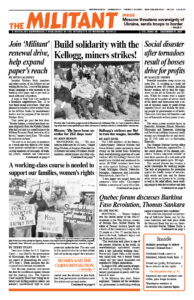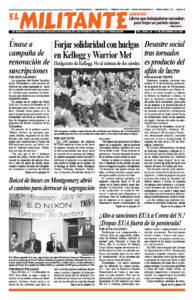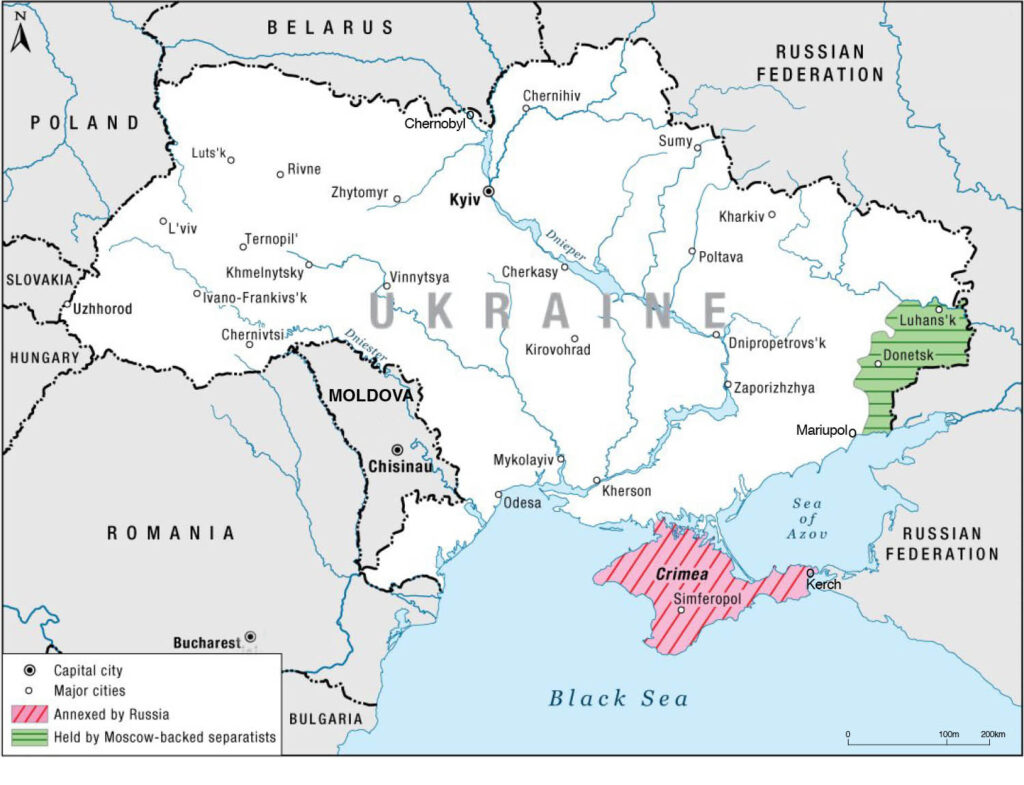The recent buildup of Russian forces along the border with Ukraine threatens that country’s sovereignty. Moscow seeks to reverse the Ukrainian rulers’ moves toward closer relations with imperialist governments in Europe and the U.S. and to advance its long-term goal of dominating Ukraine.
Moscow’s moves today are also a response to steps taken by Washington and its NATO alliance to expand its military operations closer to Russia’s borders since 1991. Missile defense systems have been set up in Poland and Romania. Washington conducts regular military exercises in those countries.
In 2014 mass protests in Ukraine involving more than a million workers, farmers and others over several months led to the overthrow of the pro-Moscow regime of President Viktor Yanukovych. Thousands camped for weeks in the Maidan — Independence Square — in Kyiv, the capital, inspiring protests across the country and fighting off murderous attacks by riot police.
The ouster of Yanukovych led Moscow to arm and aid pro-Russian separatists to begin a war in the rich industrial Donbas region, in eastern Ukraine’s Donetsk and Luhansk provinces and to seize Ukraine’s Crimea Peninsula, home to the Crimean Tartar population. Over seven years more than 14,000 Ukrainians have been killed in the conflict and millions displaced.
The Russian government claims it has moved nearly 100,000 troops in response to threats by the Ukrainian army against the Moscow-backed separatist forces in eastern Ukraine.
Russian President Vladimir Putin has threatened both the Ukrainian government and Washington not to allow Kyiv to join the U.S.-led NATO military alliance. The Ukrainian parliament approved a law, Dec. 13, allowing foreign troops to join military drills it is planning next year. Some 11,500 troops from the U.S., U.K., Poland and other countries have said they will join the war games.
In a “Zoom” meeting Dec. 7, President Joseph Biden told Putin that an invasion of Ukraine would be met with sanctions, and an expansion of U.S. troops in NATO member countries elsewhere in Europe. But Biden also made clear the stationing of U.S. troops in Ukraine was “not on the table.”
Tensions remain high. Russia’s spy agency, the FSB, claimed Dec. 9 that an unarmed Ukrainian naval vessel heading toward the Kerch Strait from the Sea of Azov endangered maritime security. Russian forces threatened to fire on it. Since its invasion of Crimea, Moscow has in effect exerted control over those waters that lies north of Crimea, between Ukraine and Russia.
The Putin regime seeks to reestablish Russia’s influence over what it calls its “near abroad” — states that were formerly part of the Soviet Union, including Ukraine.
In mid-July, Putin issued a lengthy essay “On the Historical Unity of Russians and Ukrainians.” He insists both are “one people” and asserts Ukraine “was shaped” on “the lands of historical Russia.” He claims “true sovereignty of Ukraine is possible only in partnership with Russia.”
Putin stands on the legacy of both the czarist empire — which conquered and created a true prison house of nations until it was overthrown by the 1917 Bolshevik Revolution — and the counterrevolutionary regime of Joseph Stalin. Putin has denounced the revolutionary course advanced by Bolshevik leader V.I. Lenin of supporting the rights of oppressed nations to self-determination.
Rights of oppressed nations
With the triumph of the Russian Revolution, Ukraine declared independence in 1918. Workers and peasants formed a Soviet Socialist Republic there three years later. Through the 1920s the Ukrainian language and culture flourished.
“A distinction must necessarily be made between the nationalism of an oppressor nation,” wrote Lenin in December 1922, “and that of an oppressed nation, the nationalism of a big nation and that of a small nation.” But Stalin challenged this proletarian internationalist course. Three months earlier, Stalin had proposed absorbing the independent republics of Ukraine, Belorussia, Azerbaijan, Georgia and Armenia into Russia.
Lenin objected. “We consider ourselves, the Ukrainian SSR, and others equal” and must “enter with them on an equal basis into a new union, a new federation, the Union of the Soviet Republics of Europe and Asia,” he said. The USSR was formed as a voluntary union at the end of that year.
That historic advance was reversed during a counterrevolution against the working class carried out by a privileged bureaucratic caste led by Stalin in the 1920s and ’30s. It transformed the USSR into its opposite — an oppressive “Soviet” superstate.
With the collapse of the Soviet Union in 1991, the Ukrainian people once again declared independence. At that time wannabe capitalists among the imploding bureaucracy drove to privatize industry and divvy up the country’s wealth among themselves.


